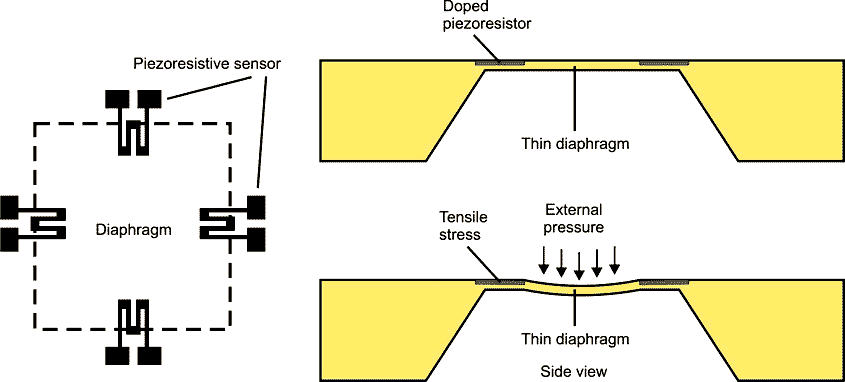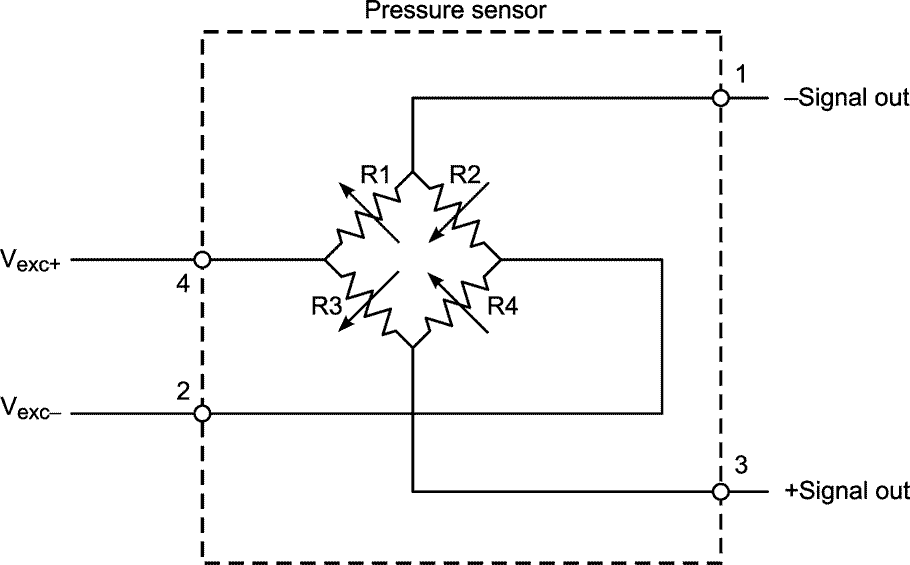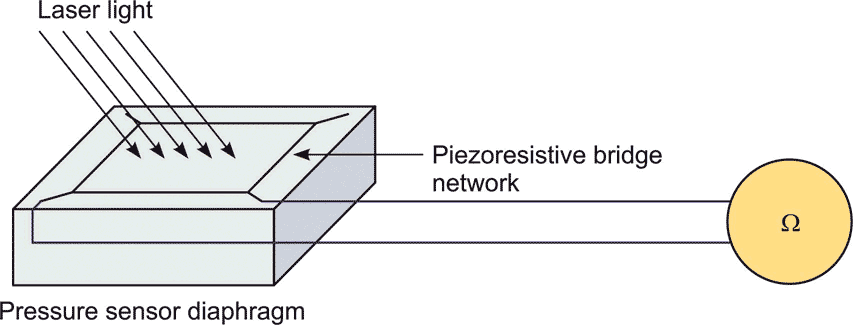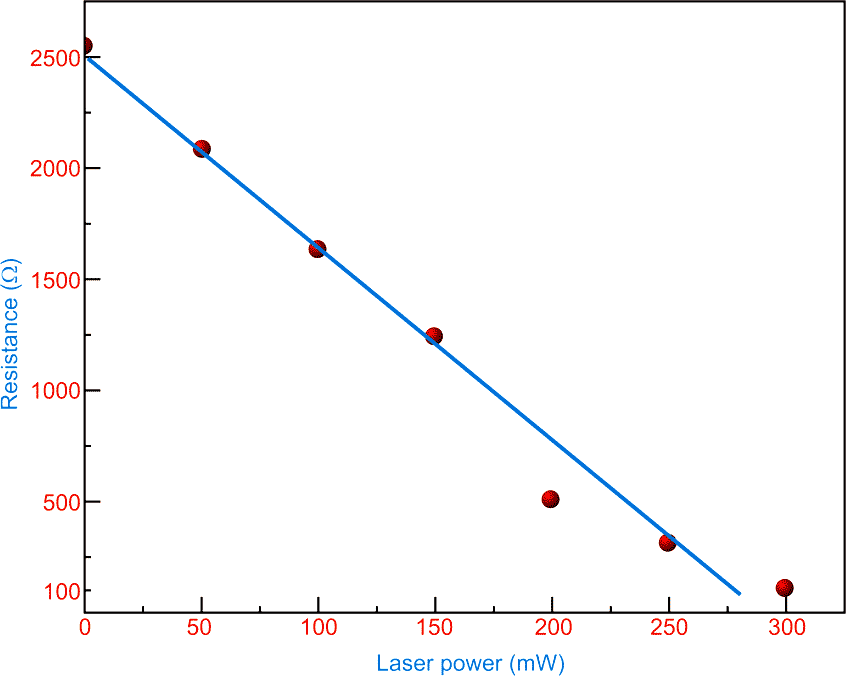J. Jayapandian, K. Prabakar, O.K. Sheela
Electronic Design
Laser power is usually measured with a thermocouple/thermopile or with photo diodes. But thermopile-based laser power meters depend on the heat the laser generates in the sensor and are usually bulky with a slow response time. Photodiode-based measurement systems can be small and responsive, but linearity is a concern. We were looking for an alternative approach that provided very precise measurements of low (mW and µW) laser power in a micro or nano size.
We decided to explore the use of piezo-resistive silicon fabricated using microelectromechanical systems (MEMS) techniques. Sensor designs utilizing these techniques have the potential of being fabricated with built-in read-out electronics for smaller size and lower cost than a conventional photodiode and amplifier. To explore the approach while avoiding the design and fabrication of new device, however, we used a commercial piezo-resistive MEMS pressure sensor.
 |
|
| Figure 1. | The MEMS pressure sensor detects the tensile stress on a thin silicon membrane that changes the piezo-resistance of elements on the membrane’s surface. |
The pressure sensor has a thin silicon membrane covering a sealed cavity, with four piezo-resistive elements fabricated on the surface (Fig. 1). When the ambient pressure differs from the pressure inside the cavity, the membrane deforms, changing the resistance of these elements. The pressure sensor typically connects the piezo-resistive elements in a Wheatstone bridge with resistors R1 and R4 showing increased resistance with rising ambient pressure and resistors R2 and R3 showing decreased resistance (Fig. 2). Amplifiers integrated into the silicon provide the pressure readout.
 |
|
| Figure 2. | The MEMS sensor’s piezo-resistive elements connect in a Wheatstone bridge to provide a signal proportional to the applied pressure. |
The change in element resistance RP is a function of both pressure and temperature, however, with
RP = R(T)[1 ± S(T) P],
where R(T) is the piezo-resistor’s nominal value at a reference pressure, S(T) is the resistor’s sensitivity to changes in pressure, and P is the applied pressure on the membrane. As a result, commercial piezo-resistive pressure sensors must incorporate temperature compensation circuits to ensure an accurate pressure measurement.
We modified a pressure sensor that offered 100-psi range with temperature compensation up to 60°C by removing the top casing and connecting a thin pair of leads across one piezo-resistive element of the bridge, bypassing the temperature compensation circuits (Fig. 3). We resealed the case with a protective cover and exposed the sensor membrane to a variable power laser source (λ = 488 nm).
 |
|
| Figure 3. | Connecting leads across one element of the sensor’s bridge allowed measurement of its resistance while bypassing the sensor’s built-in temperature-compensating circuits. |
Laser exposure caused the resistance of the selected element to change, predominantly due to heating rather than membrane deflection. Calibration then allowed use of the element’s resistance as a direct measure of laser power. The results demonstrate that the element showed excellent linearity while measuring laser power between 0 mW and 300 mW (Fig. 4).
 |
|
| Figure 4. | Exposing the modified pressure sensor to laser energy created a temperature-induced change in the piezo-resistive element’s resistance that corresponded directly to laser power. |
This Idea for Design points the way for a new design approach in laser power measurement using piezo-resistance on MEMS membranes. Suitably designed, such sensors can handle a wide range of laser powers, providing a highly miniaturized design with fast response and a long lifespan.